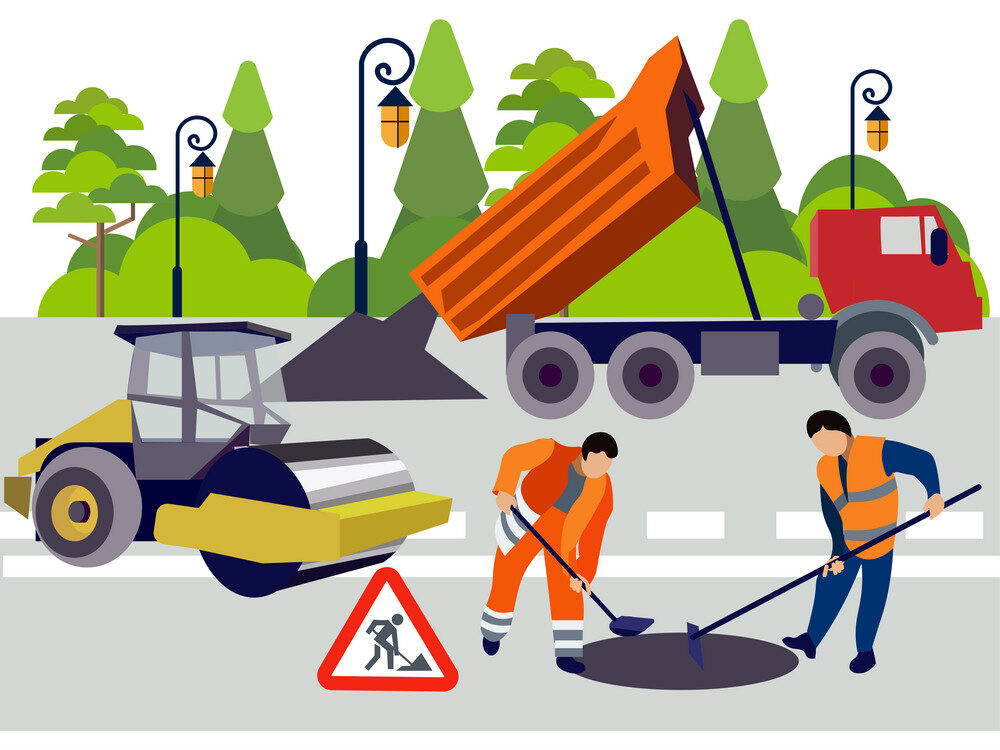soil compactor is the process of mechanically increasing the density of soil. It is an important part of construction projects, as compacted soil provides a strong, stable foundation for structures and pavements.
The purpose of soil compactor is to reduce the void ratio by packing soil particles together more tightly. This increases the weight of the soil, while reducing permeability. Well-compacted soil is much less susceptible to settling or displacement, providing the necessary bearing capacity for construction.
There are several tools commonly used for soil compactor. Hand tampers, plate compactors, and rollers apply impact and vibration forces to compress soil layers. Each tool is suited for different soil types and compaction applications.
Proper soil compactor is crucial for the integrity and longevity of any construction project. Insufficient compaction can lead to cracks, uneven settling, and structural damage over time. That’s why following recommended procedures and using the right equipment for the soil type is critical. Compacted soil reduces future maintenance costs and prevents hazardous foundation or pavement failures.
Table of Contents
Hand Tampers
Hand tampers are manual tools used to compact soil and gravel. They are among the most basic and affordable soil compactor tools.
Hand tampers consist of a heavy metal plate or tamping face attached to a handle. They rely on the user’s strength and body weight to deliver compaction force. The user lifts the tamper above their head and repeatedly drops or pounds it onto the ground.
Pros:
- Inexpensive and readily available
- Simple to use without any training
- Lightweight and portable
- Can access tight spaces that machinery can’t reach
- Low noise and emissions compared to engine-powered tools
Cons:
- Very labor intensive and tiring for the operator
- Not practical for large areas or deep compaction
- Inconsistent compaction compared to mechanical tools
- Risk of injury from repetitive motion and heavy lifting
Hand tampers come in a range of sizes from 10-40 pounds. Heavier ones can compact deeper but are more difficult to lift and control. The tamping face may be flat or have a curved shape. Some have one tamping face while others have two.
Hand tampers work well for small jobs like compacting soil in garden beds, post holes, trenches, or around underground pipes. They are commonly used in landscaping, construction, agriculture, and DIY projects when only light compaction is needed.
Jumping Jack Compactors
Jumping jack compactors, also known as reversible plates or stompers, are versatile hand-operated soil compactor equipment. As the name suggests, they operate by the up and down ‘jumping’ motion of the operator, driving the bottom plate into the ground.
Description
Jumping jacks have a flat, square metal plate on the bottom that compacts the soil as the operator bounces up and down on the handles. The handles are attached to linkages that transfer the force to the base plate. Jumping jacks are extremely portable and compact. They typically weigh between 80-140 lbs and can be easily maneuvered into tight spaces.
Pros and Cons
The main benefits of jumping jacks are their portability and ease of operation. They are affordable and versatile enough for small jobs like garden soil or trench backfill. The main downside is they do not achieve the same depth and compaction force as heavier equipment. They are suitable for shallow compaction up to 8 inches depth.
Types and Sizes
Jumping jacks come in different base plate sizes from 10 x 10 inches up to 18 x 30 inches. Some have fixed plates while others have articulated plates that self-level on uneven ground. Most models have rugged steel construction with cushioned handles for operator comfort. Honda and Wacker Neuson are two major brands.
When to Use
Jumping jacks work well for small residential projects like compacting backfill in narrow utility trenches, preparing garden beds, and soil around foundations before concrete work. They are commonly used in landscaping and by homeowners to prepare ground prior to paving or building patios. Contractors also use them on larger sites for compaction in confined areas the larger rollers can’t reach.
Vibratory Plates
Vibratory plates, also known as vibratory compactors or tampers, are popular soil compactor tools commonly used for compacting granular soils like gravel, sand, and crushed stone.
These gas or electric-powered tools have a metal plate on the bottom that vibrates rapidly, compressing the soil underneath. The vibration allows the particles to settle and pack together tightly.
Pros:
- Powerful vibration provides excellent compaction for gravel and sand
- Models with water tanks can compact and stabilize soils simultaneously
- Lightweight and portable compared to rollers
- Easy to maneuver in tight spaces
Cons:
- Not as effective in clay soils as rollers
- Limited depth of compaction (12-18 inches)
- Can cause vibration and noise
Vibratory plates come in a range of sizes, from small walk-behind models to larger riding plates. Smaller plates up to 1,000 pounds are commonly used for utility trenches, landscaping, and DIY projects. Larger models from 1,500-4,000 pounds are used for road construction, large building sites, and subgrade preparation.
These versatile tools are ideal for compacting backfill in trenches, preparing foundations, leveling surfaces, and final compaction of granular base materials. Their portability makes them useful for accessing confined spaces.
Rammer soil Compactors
Rammer compactors, also known as rammer tampers or rammers, are powerful handheld tools that deliver repeated blows to the ground to compact soil and asphalt. They are commonly used for soil compactor in trenches, around foundations, in landscaping applications, and to prepare sub-bases for paving jobs.
Rammer compactors consist of a gasoline or diesel engine that powers a hydraulic or pneumatic system to drive a heavy rammer plate up and down against the surface. This pounding action effectively compacts loose materials in layers up to 12 inches deep. The repeated impacts force air pockets out from between soil particles, increasing the density.
Pros:
- Powerful compaction in tight spaces and next to foundations or forms where plate compactors don’t fit
- Easy to control and maneuver
- Models with various plate sizes for different jobs
- Self-propelled models available for continuous compaction over large areas
Cons:
- Labor intensive as the user must hold and guide the compactor
- Not as fast as riding compaction equipment for large areas
- Produces high vibration and noise levels requiring hearing protection
There are several sizes and types of rammer compactors. Handheld units typically have rammer plates from 4 to 12 inches wide. Some models are backpacks with arm braces to make the tool easier to operate. Self-propelled rammers are walk-behind models with 12 to 20 inch wide plates that automatically move forward as the operator guides them.
Rammer compactors are commonly used for soil compactor and asphalt compaction in trenches, street repairs, small paving jobs, and anywhere plate compactors can’t easily reach. They deliver concentrated compaction force in limited spaces.
Sheep’s Foot Rollers
Sheep’s foot rollers, also known as tamping rollers, are cylindrical rollers with protruding “feet” that provide the compacting force. The feet penetrate and knead the soil to compact and densify it.
Description: Sheep’s foot rollers have a heavy, hollow drum with staggered rows of protruding metal feet. The feet can be round or rectangular in shape. As the roller moves across the soil, the feet sink in and exert significant compactive force. This kneading action works the soil particles together for maximum density. The spaces between the feet allow dirt to flow so each foot imprints and compacts a new area.
Pros:
- Effective for compaction of all soil types, even with high moisture content
- Feet provide excellent kneading action to force out air pockets
- Can compact soil to substantial depth
- Versatile for use on embankments, subgrades, structural backfill
Cons:
- Not suitable for finishing compacted surfaces
- Cannot compact edges and corners well
- Relatively slow process compared to vibratory plates
Types and Sizes: Sheep’s foot rollers range in size from 1 to over 12 tons. Lighter rollers are suitable for landscaping and small construction projects. Heavy rollers with high contact pressure feet are used on roads, dams, airports and other major construction. Various types are available including tow-behind models and self-propelled ride-on rollers.
Common Uses: Sheep’s foot rollers excel at compacting native soil subgrades on construction sites. They are commonly used for structural backfilling of foundations and retaining walls. Their deep compaction ability also makes them well-suited for earth dams, embankments, trench backfills, and sub-base preparation.
Pneumatic Rollers
Pneumatic rollers are compaction equipment that utilize tires filled with compressed air to provide compaction force. They come in both self-propelled and tow-behind models.
Description:
Pneumatic rollers contain a series of large, inflated tires mounted on a heavy steel drum. As the roller moves across the soil, the weight of the drum and the air pressure inside the tires provide a continuous kneading and impact action that compacts the soil. The tires can have different tread designs and arrangements. The tires flex and deform as they roll, creating a shearing effect in the soil that helps break up clods.
Pros and Cons:
- Effective for compaction of granular soils like sands, gravels, and other aggregates. The kneading action works well to densify these materials.
- Good for compacting over pipelines, cables, and other utilities because the tires distribute force without damaging what’s underneath.
- Not as effective in compacting cohesive soils like clays. The tires tend to smear and pump wet clays rather than compact them.
- Limited compaction depth compared to vibratory plates and rammers. Usually achieves 0-8 inches maximum density depth.
Types and Sizes:
Pneumatic rollers range in size from 1 to over 20 tons. Small rollers may have just a few tires while larger models can have 8 or more in sets of front and rear gangs. They come in smooth drum or padfoot drum styles. Padfoot drums have protruding cleats that can help fragment soils.
When They’re Used:
Pneumatic rollers work well for secondary compaction passes after initial breakdown compaction. They provide finishing compaction to smooth and grade aggregates. Also good for compacting lighter materials like cinder beds. Widely used for compacting subgrades, subbases, and granular fills.
Choosing the Right Tool
When selecting a soil compactor tool, it’s important to consider a few key factors to ensure you choose the right tool for the job. The main aspects to evaluate are:
- Project Scope and Location – Consider the size of the area that needs compacting and if there are any access or space constraints. For small areas like trenches or confined spaces, hand tampers or walk-behind plates work well. Larger open areas are better suited to riding compaction equipment.
- Soil Type – The composition of the soil is crucial. Granular soils like gravel and sand compact best with vibratory force. Cohesive soils like clay respond better to the kneading action of padfoot rollers. Very wet soils may require sheepsfoot rollers to displace water as they compact.
- Compaction Depth – Some tools like hand tampers only compact the very top layer while vibratory plates can reach down 12-18 inches. Deep fill projects require heavy rollers to fully compact soil at depths over 18 inches.
- Degree of Compaction – Final density requirements dictate compaction tool selection. Critical structures need 95% Proctor density achieved by heavy rollers. Lighter compaction may be acceptable for landscaping areas.
- Access to Utilities – In areas with underground utilities, low impact handheld tools may be the safest option to avoid damage. Heavy rollers put utilities at risk.
- Budget – Larger riding compaction equipment costs significantly more to rent or purchase compared to handheld tools. Factor in tool costs relative to the scale of the project.
Taking the time to match the right compaction tool to your specific soil type, site conditions, and project goals will help achieve proper compaction efficiently and cost-effectively.
Safety Tips
When using soil compactor equipment, it’s important to follow safety guidelines to avoid injuries. Here are some key safety considerations:
Overview
- Read and follow the manufacturer’s instructions for safe operation. Never remove safety guards.
- Ensure the equipment is well-maintained and all parts are in working order. Check for fluid leaks, damaged or loose parts, and worn components.
- Wear proper protective equipment like steel-toe boots, gloves, eye protection, and hearing protection. Hard hats should be worn when others are working nearby.
- Clear the area of debris, rocks, tools, and other objects that could get caught in moving parts. Mark underground utilities.
- Do not allow untrained operators to use the equipment. Only qualified personnel should operate compaction equipment.
- Never operate equipment while under the influence of drugs, alcohol, or medications. Stay alert and focused.
Protective Equipment
- Sturdy boots with slip-resistant soles to avoid falls. Steel or composite toes protect feet.
- Gloves to protect hands from pinches, scrapes, and vibration. Choose well-fitting gloves.
- Safety glasses or goggles to prevent eye injuries from flying debris.
- Ear plugs or muffs to protect hearing from loud noise.
- Dust masks for protection against inhaling fine particles. Respirators may be needed for hazardous dusts.
- Hard hats for head protection when others are working nearby.
Safe Operating Guidelines
- Do pre-start inspections, test controls, and scan the area before use.
- Allow equipment to warm up before operating at full capacity.
- Keep proper footing and balance. Operate only on level surfaces.
- Avoid excessive slopes, ditches, drop-offs, and soft ground conditions.
- Watch for people, vehicles, and other objects entering the work zone. Establish a safe perimeter.
- Do not leave equipment unattended when operating. Shut down before leaving the operator zone.
- Refuel only with engine off and cool. Clean spills immediately.
- Use extra caution when reversing or changing directions. Move slowly.
- Shut down equipment properly when parking. Engage brakes and locks.
Following basic safety practices can help prevent serious injuries when using soil compactor equipment. Stay alert, wear protective gear, and operate equipment responsibly.
Conclusion
Proper soil compactor is a crucial step in construction projects, helping to stabilize soil and provide a solid foundation. In this article, we covered some of the most popular tools used for soil compactor, ranging from basic hand tampers to heavy-duty rollers.
The key takeaways include:
- Hand tampers like the jumping jack are affordable, portable options ideal for small spaces and patching jobs. They require more physical effort to operate.
- Vibratory plates provide more power and efficiency than hand tampers. Different sizes suit various compaction needs.
- Rammer compactors deliver concentrated, powerful blows to heavily compact soil. They work well in restrictive spaces.
- Sheep’s foot rollers excel at compacting cohesive soils thanks to their unique design. The feet help break up dense soils.
- Pneumatic rollers use vibration and weight for thorough compaction. They cover large areas quickly and work on various soil types.
Proper soil compactor lends strength and stability to foundations and earthworks. It prevents future settling and deformation that could undermine structures. Following best practices matching the tool to the soil and project ensures quality, long-lasting compaction.



